The Cathedral Church of St. John the Divine (or St. John the unfinished, since it is only partially completed) sits above Morningside Park just northwest of Central Park next to St. Luke’s Hospital.
The Cathedral has had Red-tailed Hawk nests in the years past, but I hadn’t heard any news about a current nest from any of the Central Park birders.
I had gone up to St. John the Divine looking for a nest earlier in the spring. I was trying to find out where the Red-tails in the North Woods were nesting but I didn’t have any luck finding the nest. (St. John the Divine is the largest Cathedral in the world, so I’m not surprised I didn’t find it!)
Out of the blue, Bill Green emailed me early last week, that there was a Red-tailed Hawk nest on the Cathedral. Tuesday it was raining very hard, so I had to wait until Wednesday to go up and see the nest.
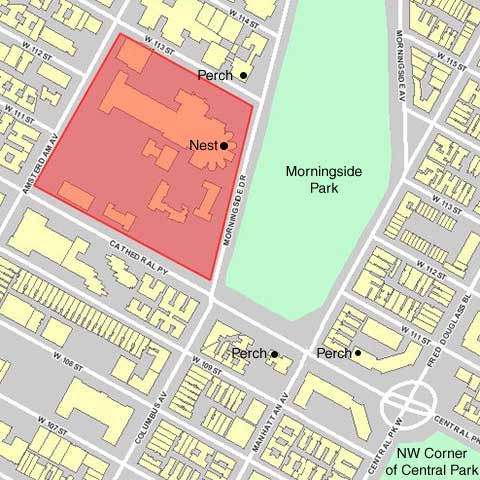
Dog walkers in the neighborhood told us that construction of the new nest began last year. (Update: James O’Brien found pictures of the nest site with just a few twigs in 2004, so construction on this nest began at least two years ago.)
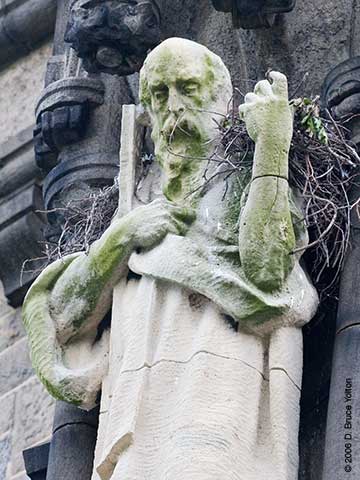
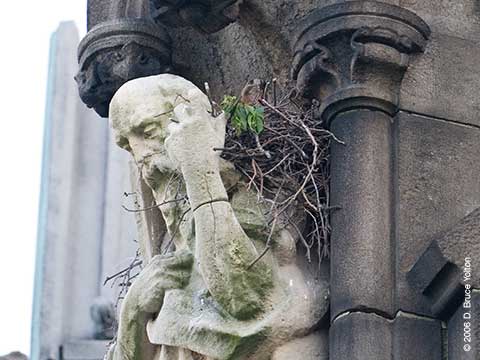
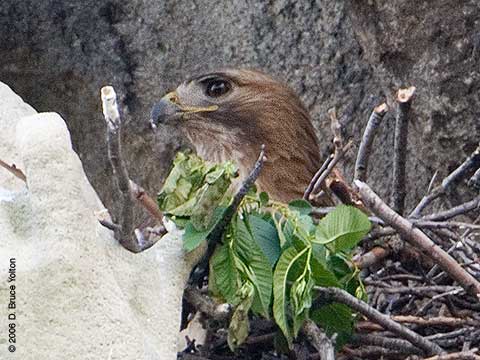
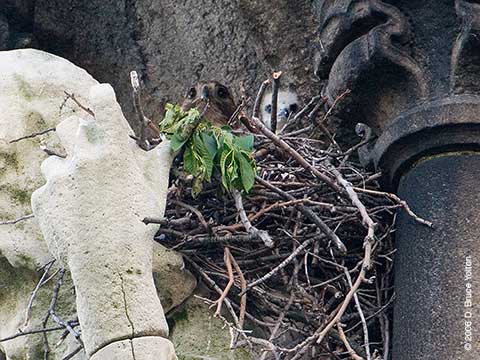
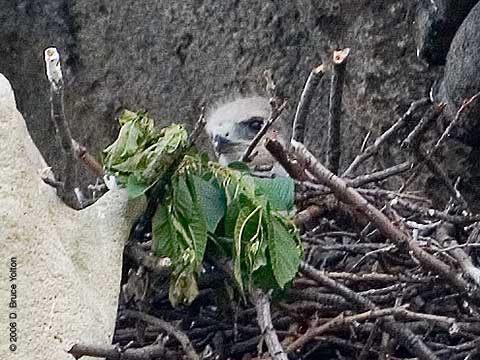
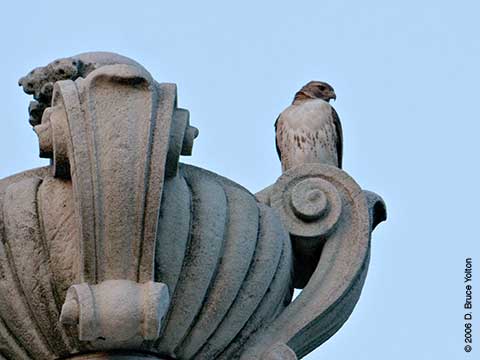
On Thursday I returned. James O’Brien, who I had told about the nest, joined me on Thursday. (James blogs at yojimbot.blogspot.com. For his perspective on the nest, take a look at his blog.)
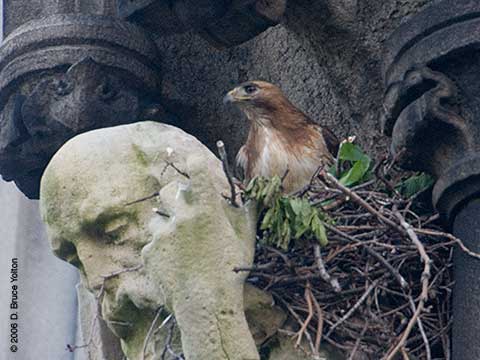
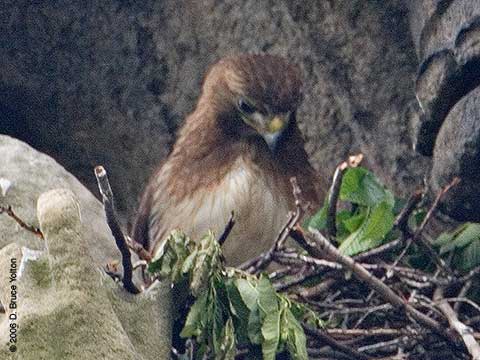
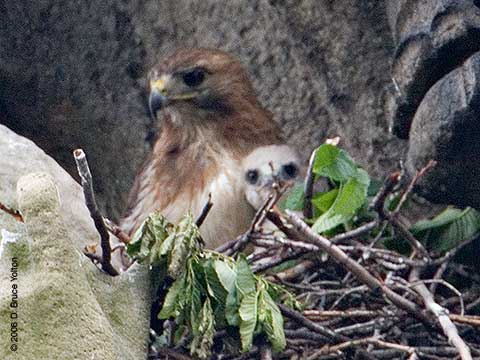
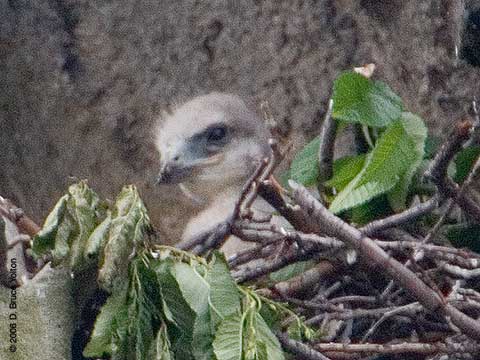
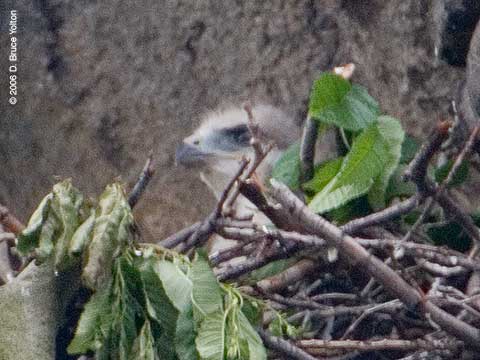
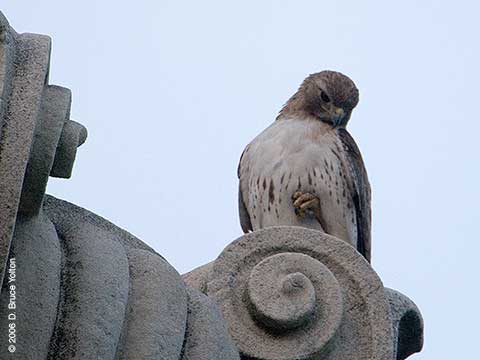
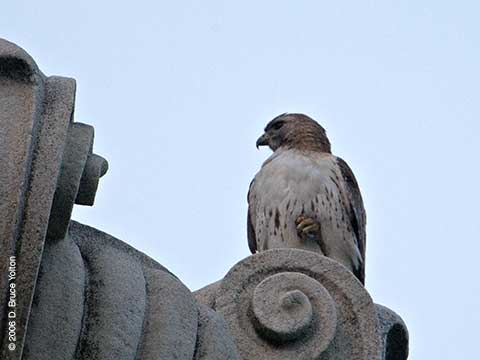
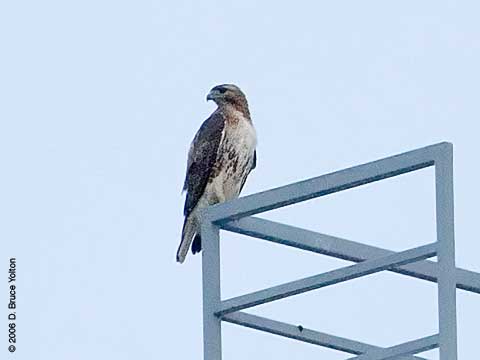
When I arrived on Friday evening, no one could be seen.
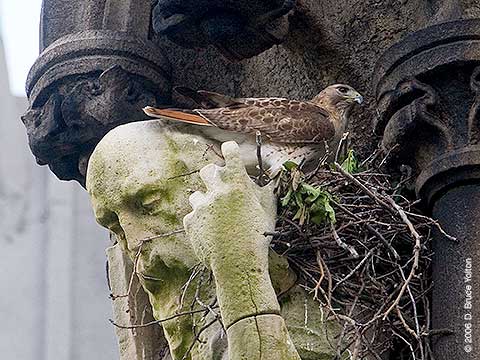
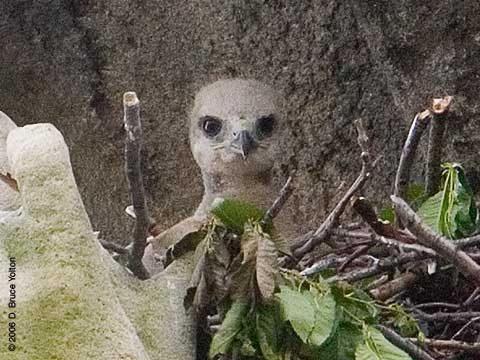
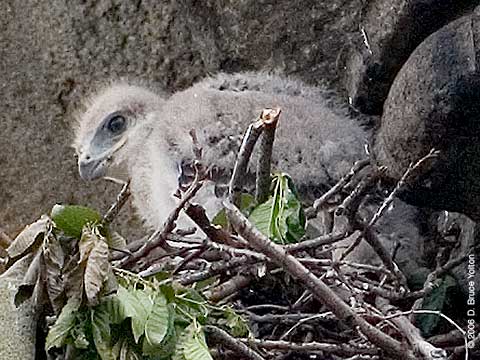
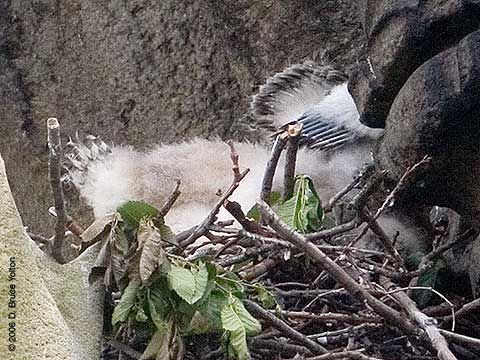
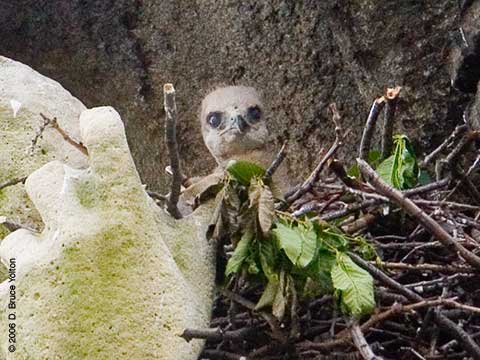
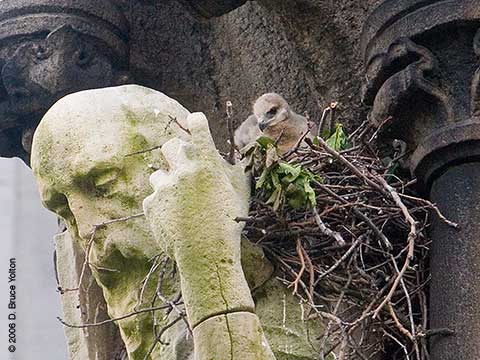
On Saturday, I spent the late afternoon at the nest.
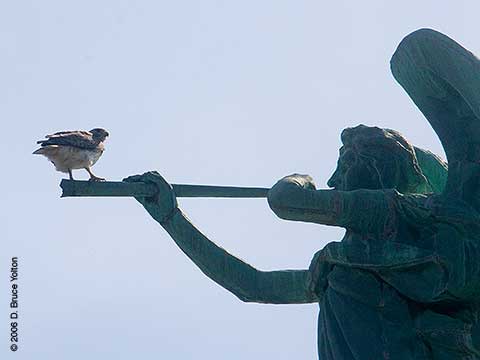
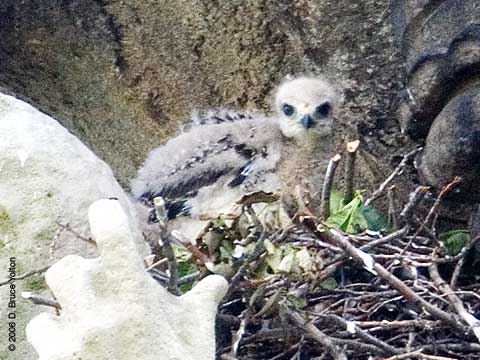
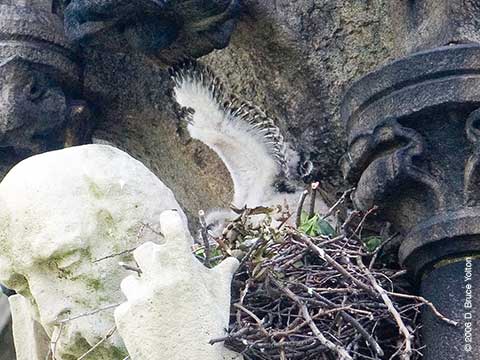
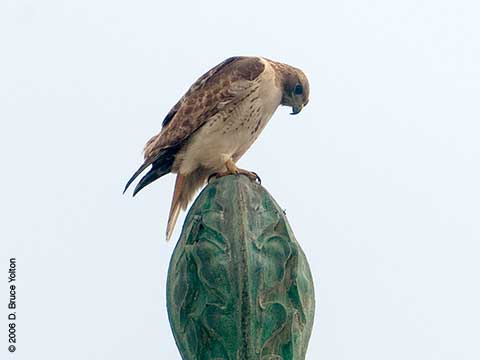
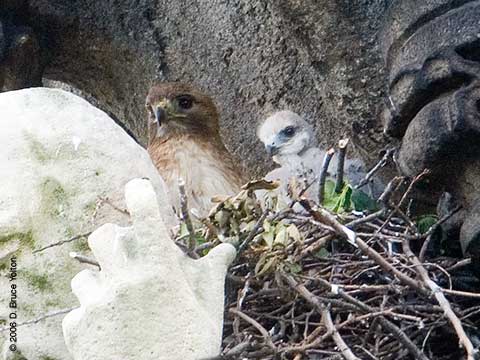
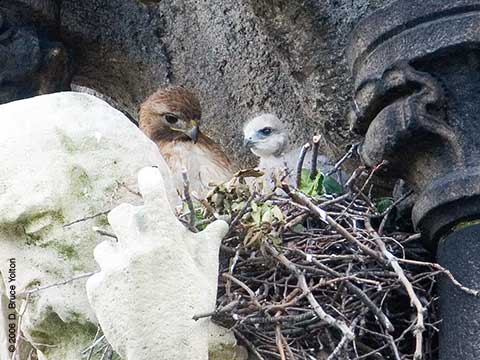
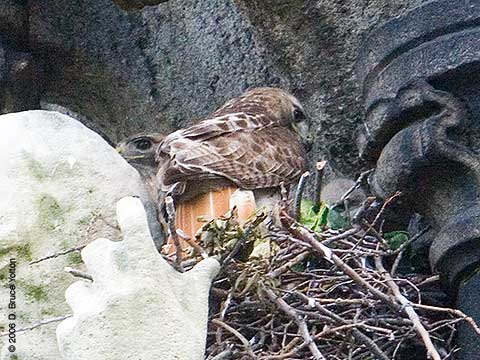
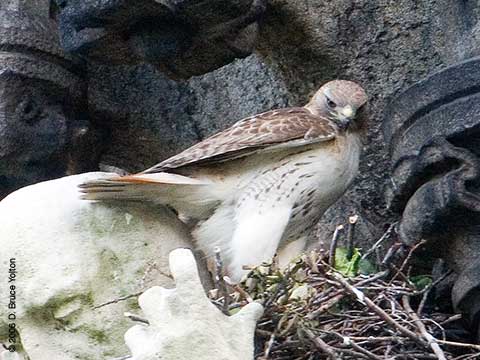
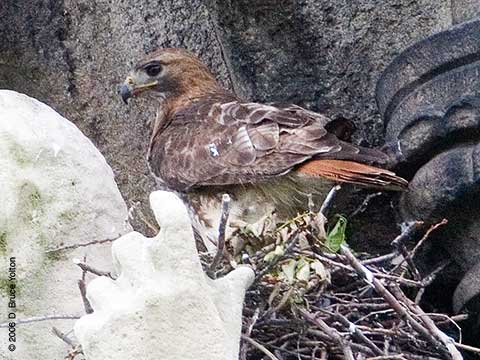
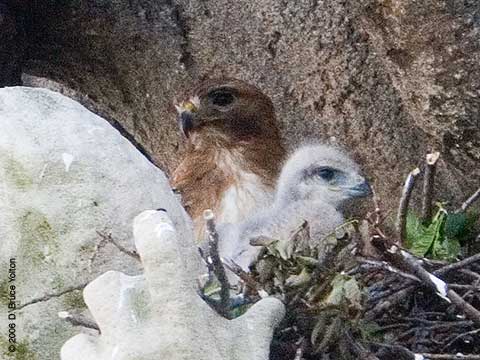
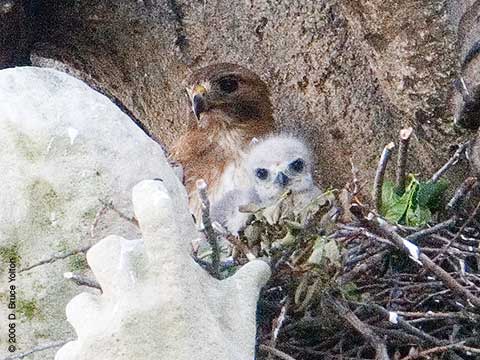
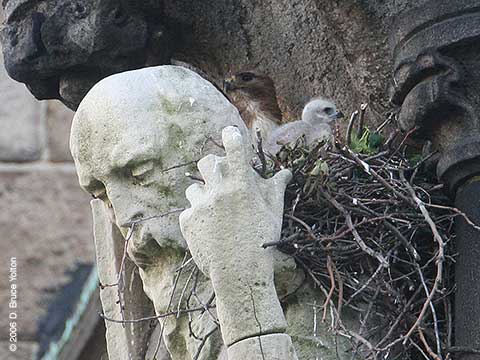
On Sunday, I spent six hours in the afternoon and evening looking at the nest.
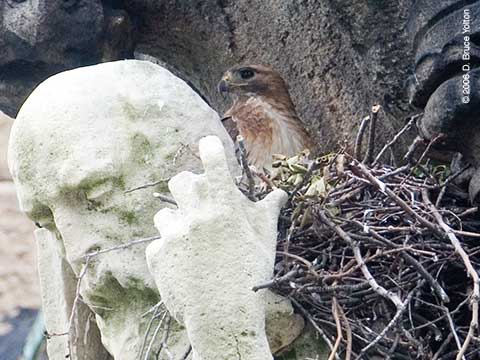
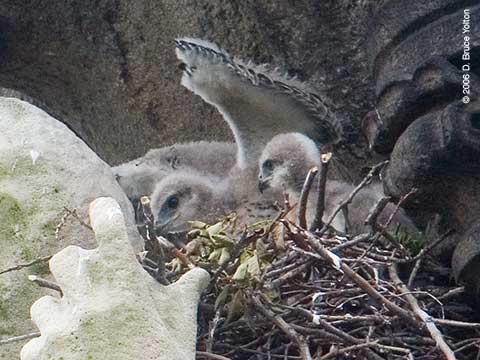
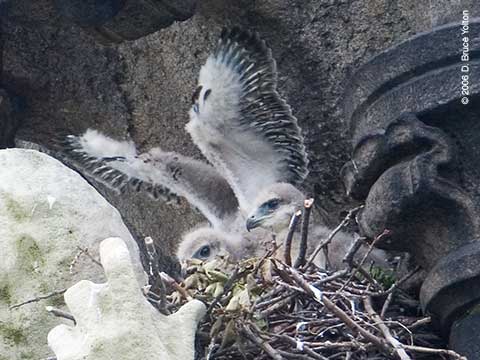
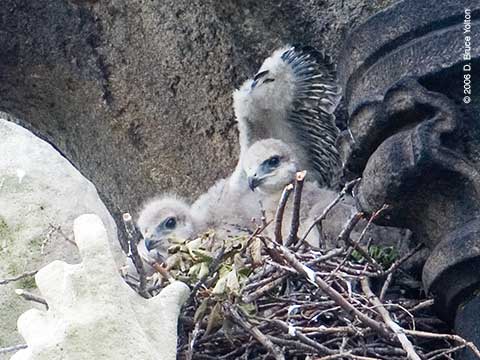
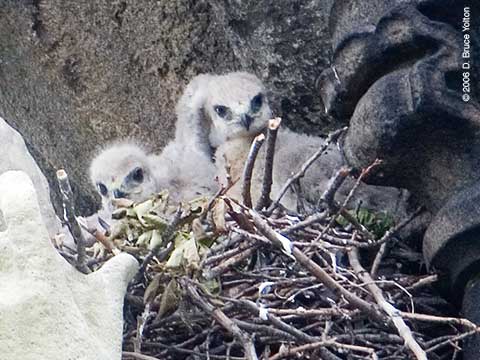
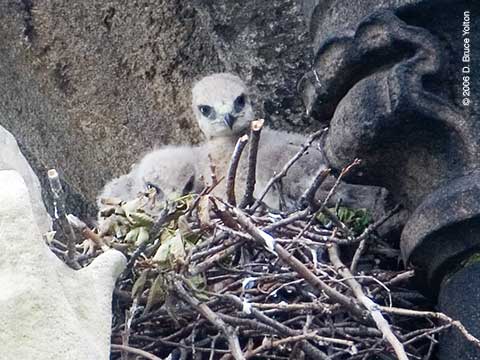
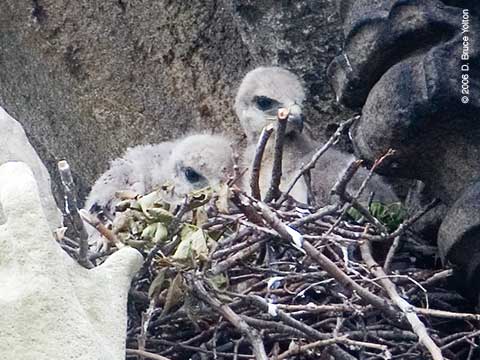
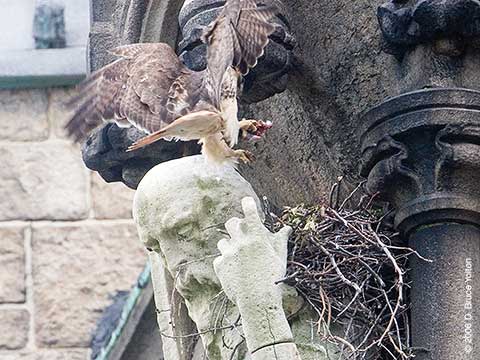
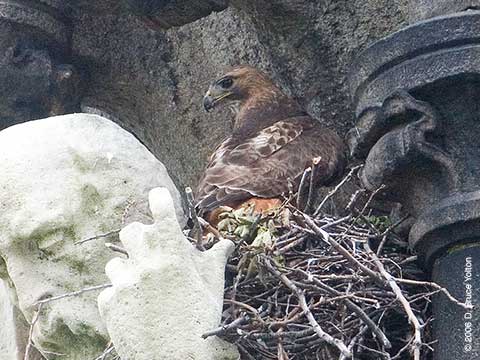
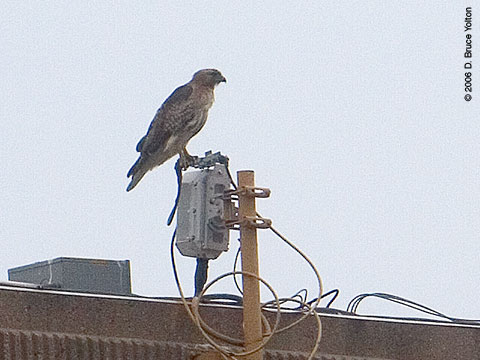
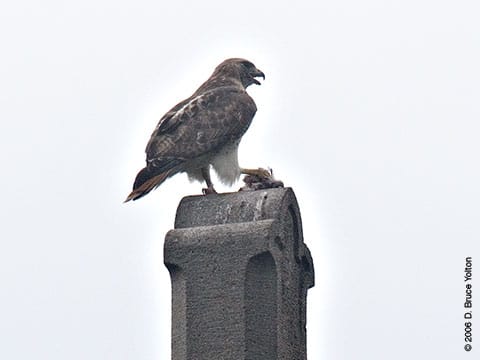
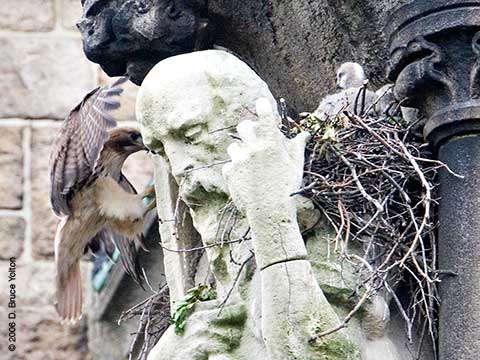
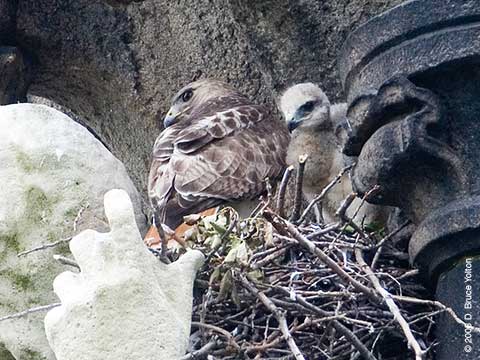
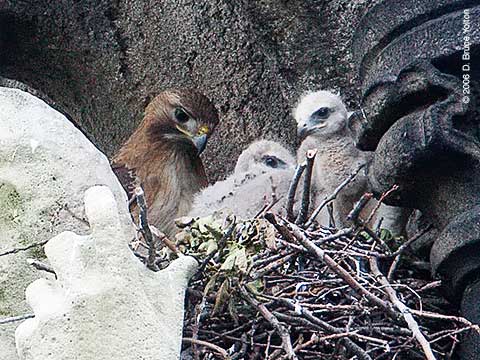
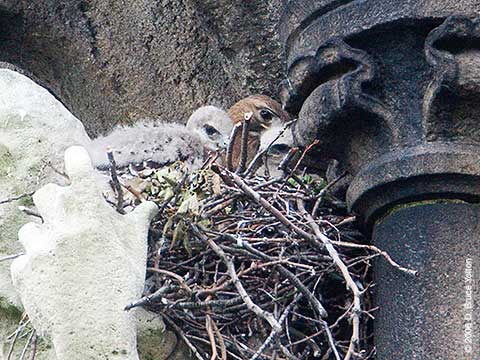
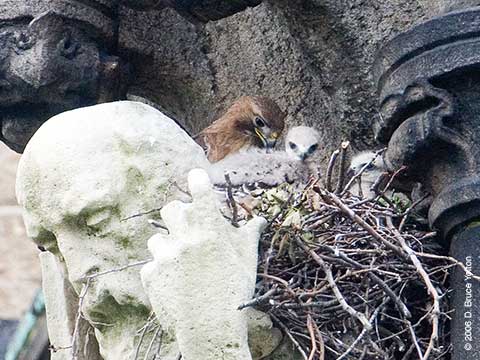
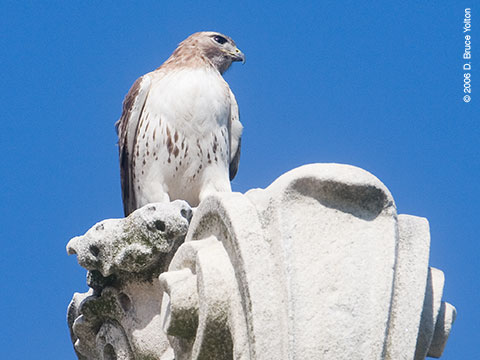
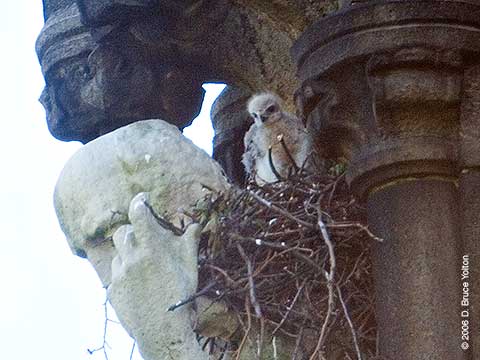
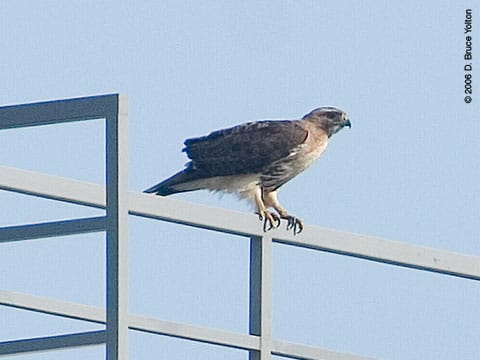
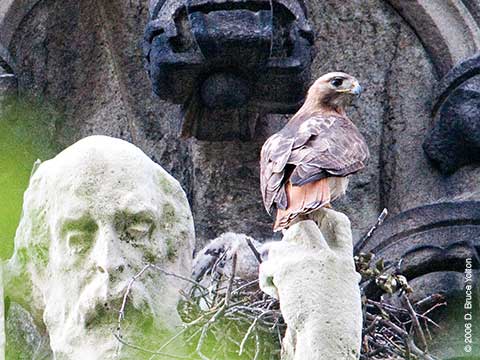
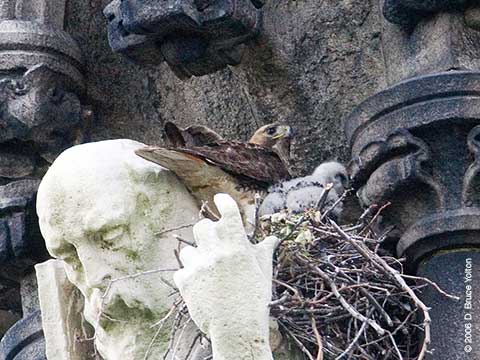
What a wonderful five days of birding.
I don’t think these birds need to be named. But if it turns out folks want to name them, I think we should ask the children of the Cathedral School to do the honors. These Red-tails are their neighborhood birds, not ours.
I spent a lot of time on 113th Street these last five days, and if you live in Morningside Heights, you should be proud of your neighbors. I met the nicest people. They shared their knowledge of the hawks, asked great questions, welcomed me and had the manners you would expect to see in a small town. It was nice to discover that Morningside Heights is a real neighborhood.
If you go up to see the nest, don’t expect instant gratification. There are long periods where the parents can’t be seen and the young are sleeping. Expect to spend an hour or two. If it’s too boring, you can go to Morningside Park, do some birding and come back. You will need binoculars, but you don’t need a telescope.